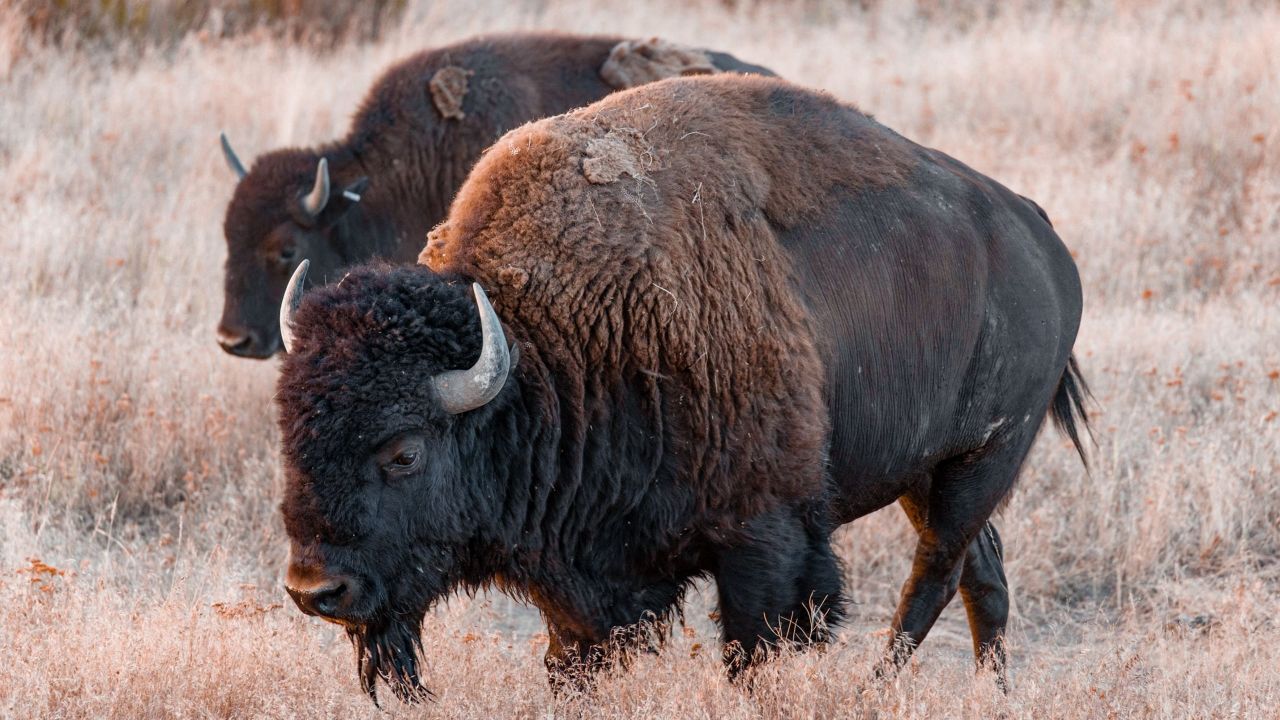
American Bison (Bison bison): a species of bison native to North America.
AKA: American buffalo or buffalo
Kingdom: | Animalia
Phylum: | Chordata
Class: | Mammalia
Order: | Artiodactyla
Family: | Bovidae
Genus: | Bison
Species: | B. bison
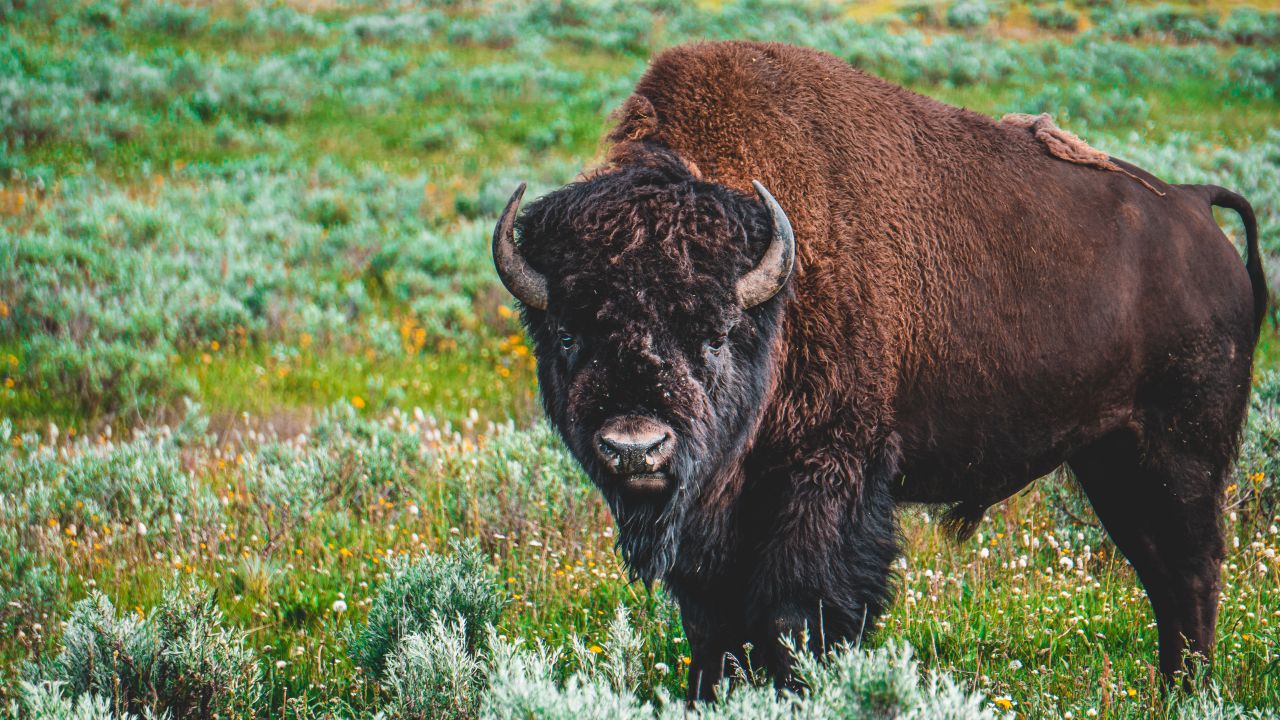
Size and Weight:
American bison are the largest terrestrial mammals in North America. Male bison are significantly larger and heavier than females. A mature bull can reach 5.5 to 6.5 feet high at the hump and 9 to 12.5 feet in length. Whereas females typically measure 5 feet high at the hump and 7 to 10 feet in length. American bison can weigh 1,800 to 2,400 pounds.
Appearance:
Bison are large, hoofed mammals. They have a hump over the front shoulders and slimmer hindquarters. Males and females have a set of sharp, pointed horns, that curve outward and up from the sides of their massive heads. They have cloven hoofs, which help them to reach speeds up to 30 miles per hour. While they have excellent hearing and smell, they have poor vision, so an entire herd can stampede if it is startled.
They have a shaggy, long, dark-brown winter coat, and a lighter-weight, lighter-brown summer coat. Their head, neck, forelegs, and front parts of the body are covered with a thicker coat of long, dark hair. Bulls add to this thick coat with a black beard that can measure about one foot long. The rear part of the body is covered with shorter hair. Their shaggy head is the most heavily insulated part of their body, helping them to withstand blizzard conditions.

Diet:
Bison are herbivores, grazing on the grasses and sedges of the North American prairies year-round. While they feed primarily on grasses, they also consume flowering plants, lichens and woody plant leaves. They typically ingest 1.6% of their body mass per day of dry vegetation. Their daily schedule involves two-hour periods of grazing, resting and cud chewing, before moving on to a new location to graze again. In the winter, they find grass by sweeping their head from side to side to clear snow.
Habitat:
Bison are found primarily in the grasslands and prairies of North America. Within the national parks, bison are found at all elevations.
Geography:
While bison were once widespread from Alaska to northern Mexico, they now occupy only 1% of its original range. Its current range includes parts of Alberta, British Columbia, Manitoba, Northwest Territories, Ontario and Saskatchewan in Canada, as well as Arizona, California, Idaho, Montana, South Dakota, Utah, Alaska and possibly Texas in the United States. These herds are substantially fragmented.
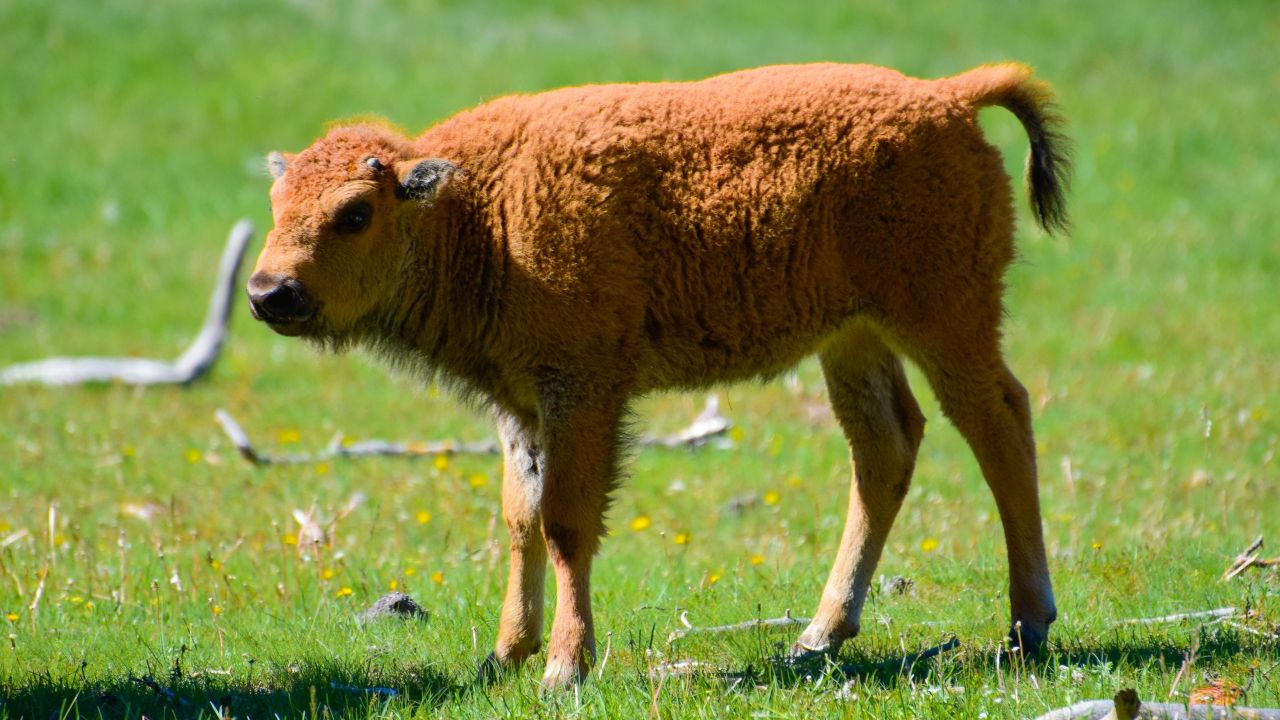
Breeding:
Females reach sexual maturity at 2 to 3 years of age. Meanwhile, males reach maturity around age three but do not breed until they are about six years of age. The mating season occurs from late June to September. It can be a tense time for males. A breeding bull protects his harem of chosen females from other males. He will display his fitness by charging and butting heads with other bulls. They rarely fight to the death. During the breeding season, a male bull may lose more than 200 pounds. The most dominant bulls often mate in the first 2 to 3 weeks of the season. Meanwhile, the more subordinate bulls mate with any remaining estrous cow that has not mated yet. Male bison play no part in raising the young.
After a gestation period of about 285 days, the female gives birth to a single yellow-red calf in a secluded area away from the herd. After several days, the calf can keep up with the herd and stays with its mother until the following spring. Calves are nursed for seven to eight months and are fully weaned by the end of the first year. While females typically stay in their mother’s herd, male offspring leave their maternal herd when they are about three years old. They go off to either live alone or join other males in bachelor herds.
Social Structure:
Bison live in social groups called herds. Females live in maternal bands, including other females and their male and female offspring. Meanwhile, adult males live alone or with other males in bachelor herds of up to 30 individuals. Male and female herds typically only come together during the breeding season. Both male and female herds have dominance hierarchies with bands arranged by sex, age, season, and habitat. Their dominance is often decided by their birth date, as bison born earlier in the breeding season are more likely to be larger and more dominant as adults. The bands may congregate in large herds in the spring or fall to search for food or water.
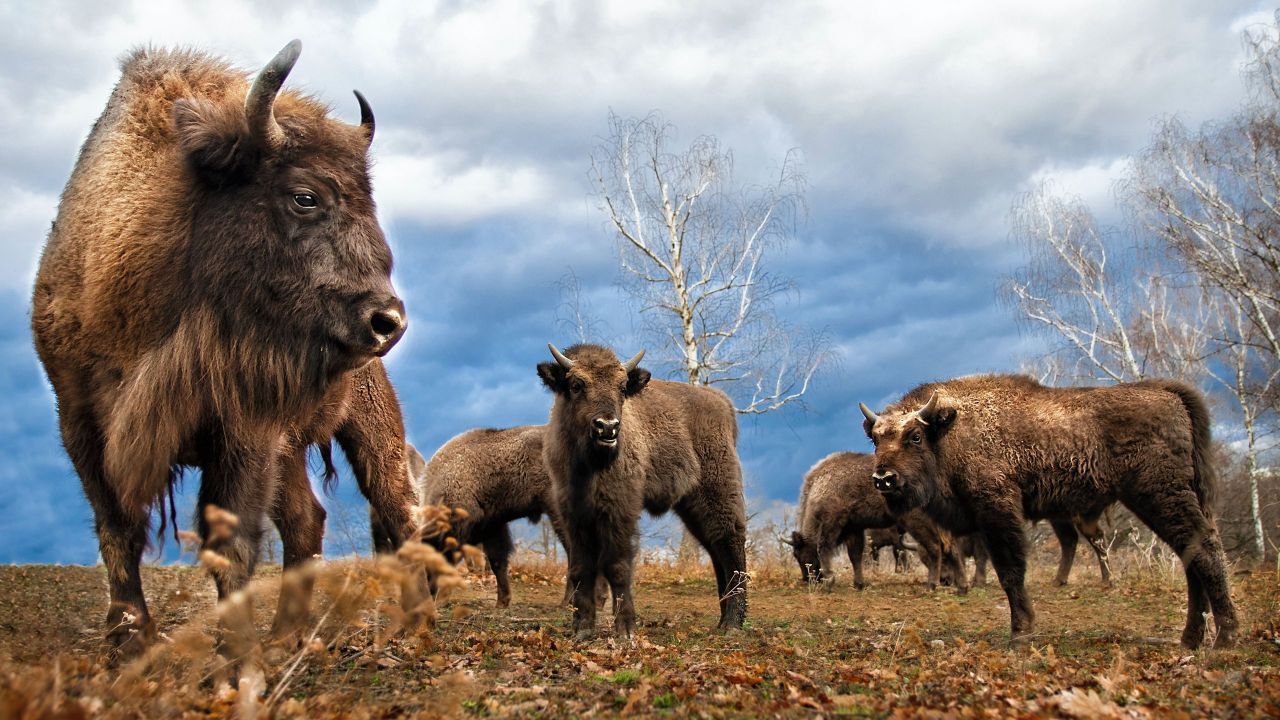
Lifespan:
The life expectancy of American bison is 15 to 20 years.
Threats:
Healthy, adult bison have few natural predators. However, weak, old or young bison may fall prey to mountain lions, bears or wolves. Habitat loss, hybridization in managed populations and low genetic diversity among individual herds are the largest threats to bison populations.
Prior to 1800, bison were widespread and numerous throughout much of western North America. They were a major source of meat and hides in the United States, and formed the basis of the economy for a number of Native American tribes. Bison hunting was an activity fundamental to the Indigenous peoples of the Great Plains. The activity was later adopted by American professional hunters, as well as by the U.S. government, in an effort to sabotage the central resource of some American Indian Nations during the American Indian Wars. By the 1890s, there were fewer than 1,000 American bison left on the continent. While conservation efforts have helped save the species from extinction, continued efforts are still needed.
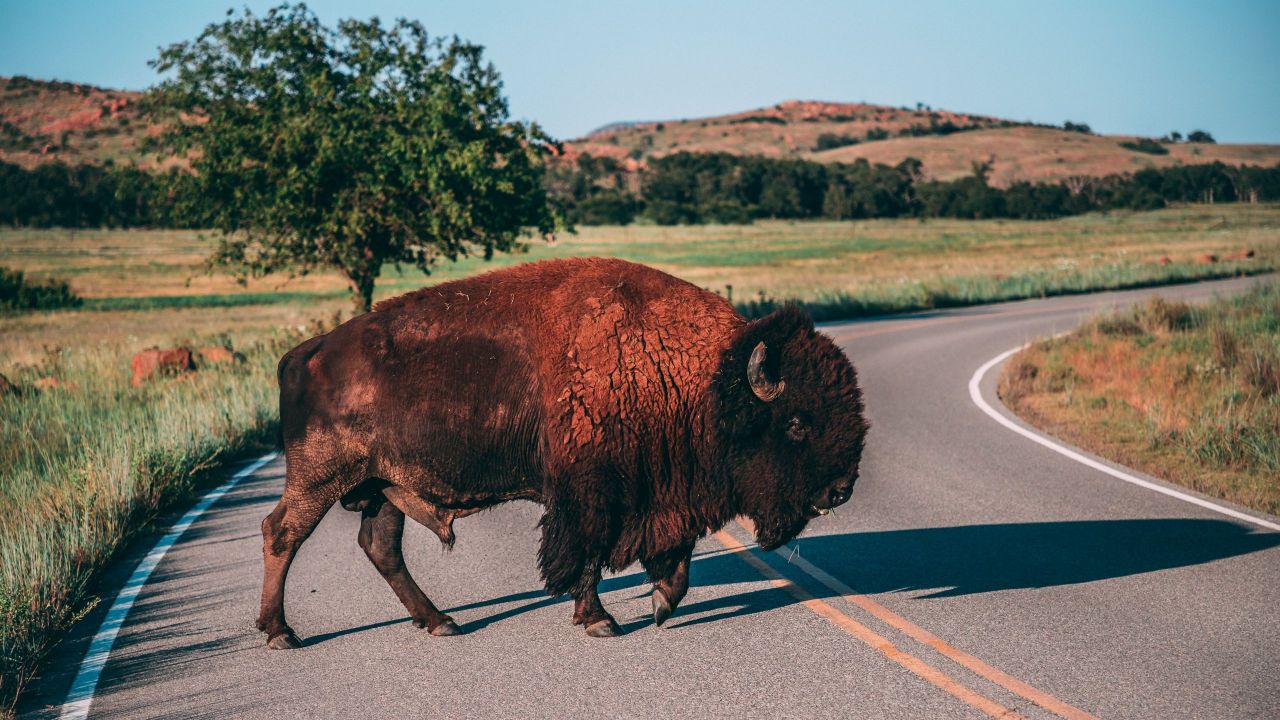
Conservation Status:
The American bison is listed as Near Threatened by the IUCN’s Red List of Threatened Species.
Conservation Efforts:
Since the species near extinction in the late 1800s, American bison have made a comeback. But the species is still heavily dependent on conservation action for survival. Of the remaining American bison population, approximately 500,000 individuals are managed as livestock by private commercial ventures, while conservation herds are comprised of around 30,000 individuals.
Many conservation measures have been taken by Indigenous communities. The Intertribal Bison Council (ITBC) is one of the most significant efforts. It is a collection of 80 tribes and 20 states, which facilitate the management of over 20,000 buffalo. ITBC focuses on reestablishing herds on tribal lands in order to promote culture, revitalize spiritual solidarity, and restore the ecosystem.
Sources: Smithsonian’s National Zoo & Conservation Biology Institute and U.S. Fish & Wildlife Service.
